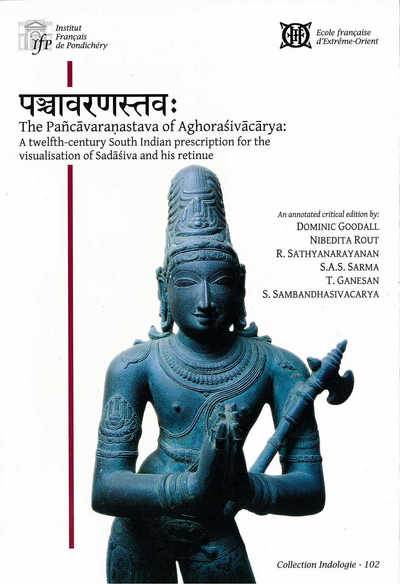- EAN13
- 9782855396620
- Éditeur
- EFEO – École française d'Extrême-Orient
- Date de publication
- 1 juin 2005
- Collection
- Collection Indologie
- Nombre de pages
- 266
- Dimensions
- 23,5 x 17 x 1,6 cm
- Poids
- 500 g
- Langue
- fre
The Pancavaranastava Of Aghorasivacarya, A Twelfth-Century South Indian Prescription For The Visualisation Of SadāŚIva And His Retinue
Aghoraśivācārya
EFEO – École française d'Extrême-Orient
Prix public : 23,00 €
Ce volume présente l’édition critique d’un hymne liturgique en cent vers rédigé par Aghorasiva, un théologien du XIIe siècle qui a vécu à Chidambaram, célèbre par ses nombreux commentaires et ses manuels de rites : la Mrgendrapaddhati et la Kriyakramadyotika. Cette dernière oeuvre, achevée en 1157, fait encore autorité dans la vie rituelle des temples sivaïtes en Inde du Sud aujourd’hui.Dans son Pancavaranastava, « L’hymne des cinq circuits », Aghorasiva montre comment il faut visualiser la divinité centrale du Saiva Siddhanta quand on la vénère. L’initié voit Sadasiva – bénin, blanc, sans épouse, avec cinq têtes et dix bras – sur un lotus blanc de 8 pétales. Rangés autour de lui en cinq cercles concentriques se trouvent d’abord les formes anthropomorphiques des 11 mantras qui sont les têtes et les membres de son corps, ensuite les 8 administrateurs de l’univers, les 8 membres de sa famille proche, les 10 protecteurs des directions et les 10 armes anthropomorphisées de ces derniers.Le texte est accompagné de notes et d’une sélection de photographies.This volume presents a critical edition of a once celebrated liturgical hymn in one hundred verses by Aghorasiva. That celebrated twelfth-century theologian of Chidambaram is known both for his commentaries and for his ritual manuals: the Mrgendrapaddhati and the Kriyakramadyotika. The latter, completed in 1157 AD, remains one of the principal authorities for the performance of ritual in South Indian Saiva temples today.In his Pancavaranastava, “Praise of the Five Circuits”, Aghorasiva shows how the central deity of the Saiva Siddhanta should be visualised in worship. The initiate should see the benign, white, consortless, five-faced and ten-armed Sadasiva enthroned on an eight-petalled lotus. Arranged around him in five concentric rings are anthropomorphic forms of the 11 mantras that are his heads and body-parts, then 8 souls that administer the universe, then 8 members of his family, the 10 divinities that protect the directions, and finally the anthropomorphised weapons of those protectors.Annotation and a selection of photographs accompany the text.


















